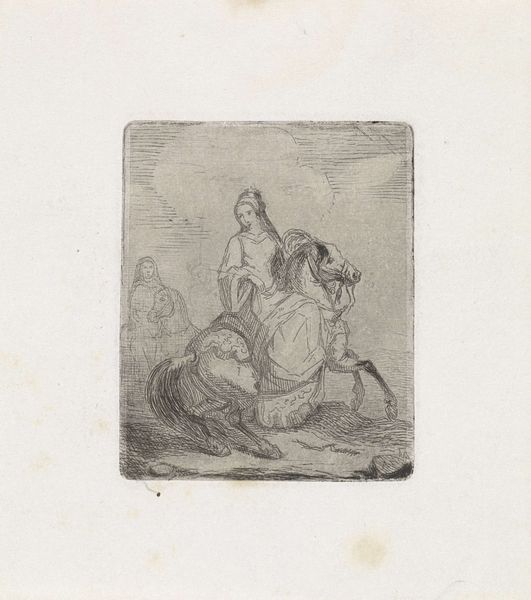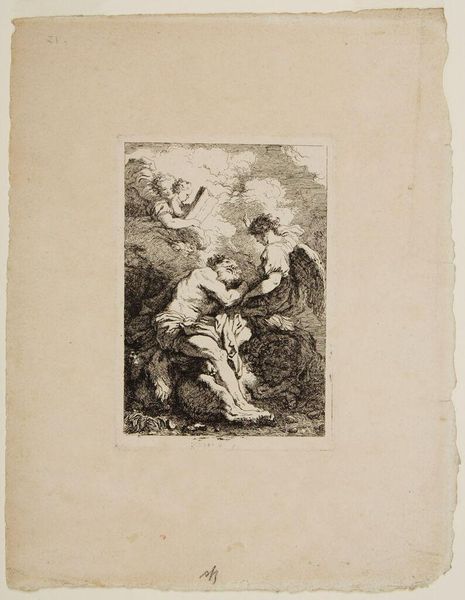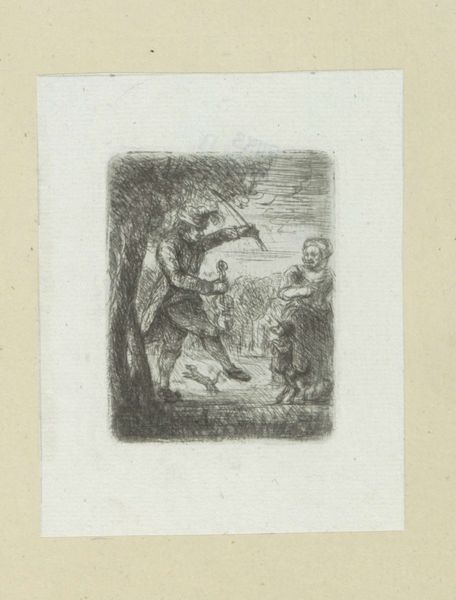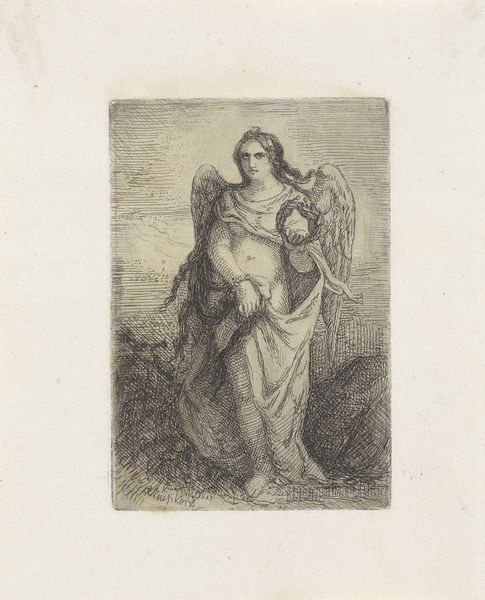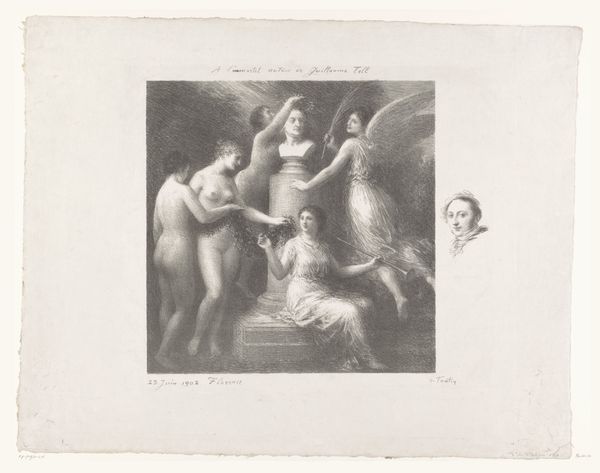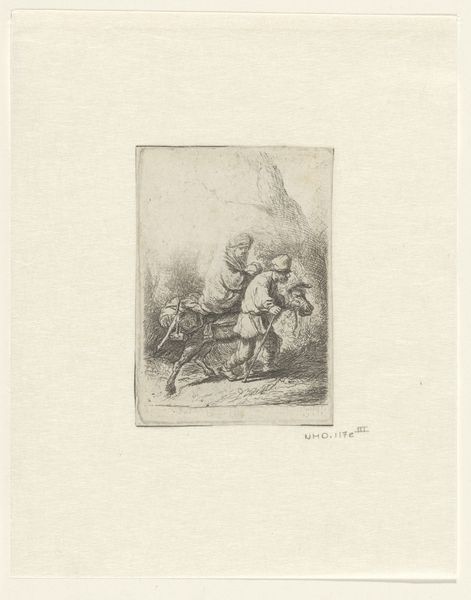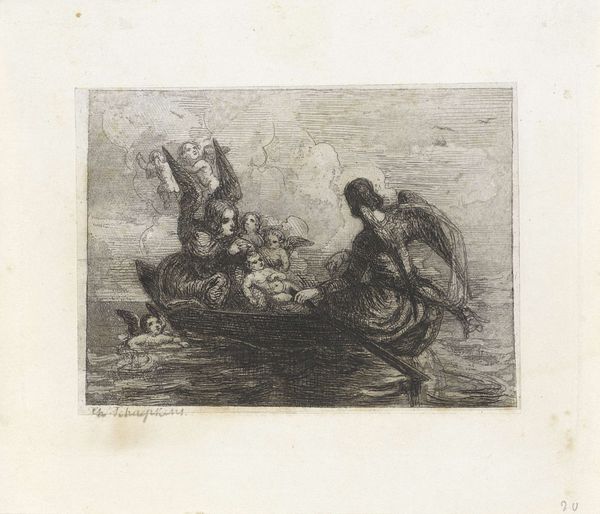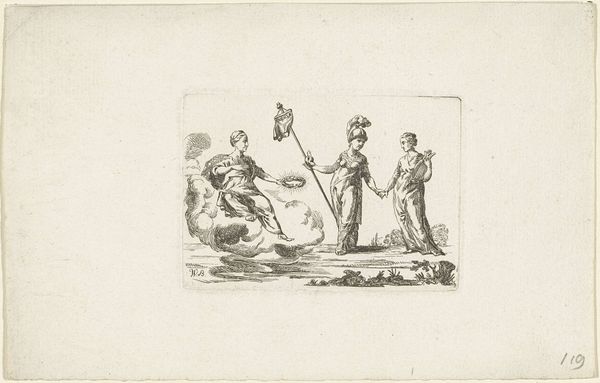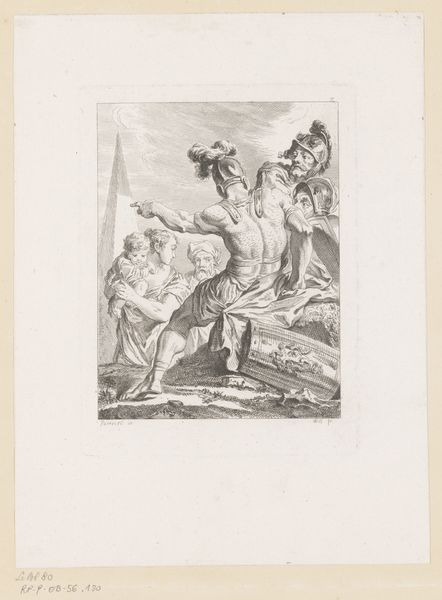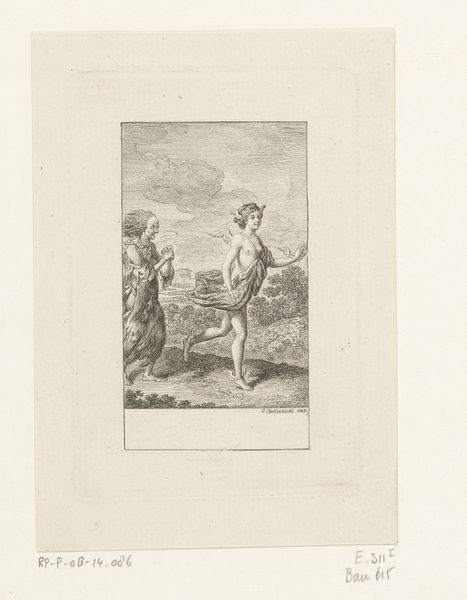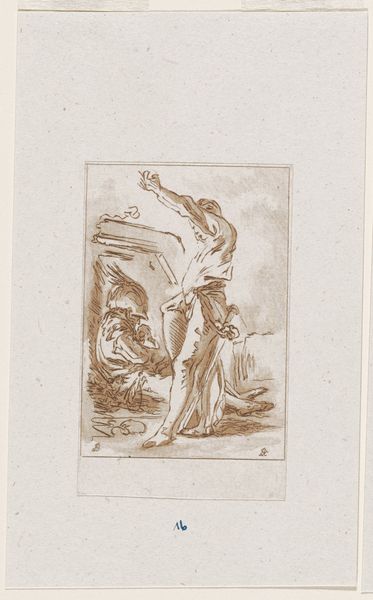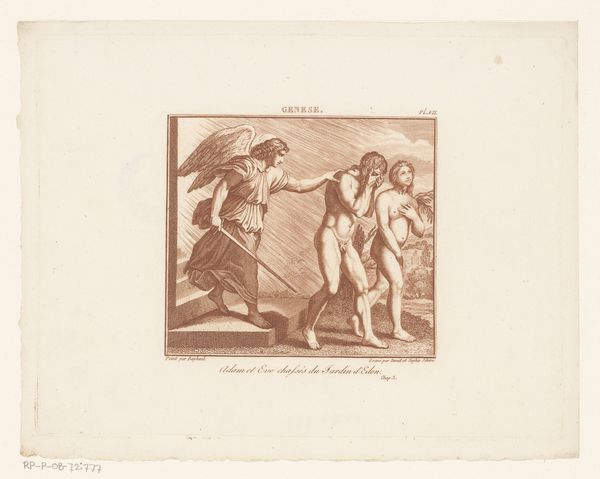
drawing, print, etching, paper, ink
#
drawing
#
narrative-art
# print
#
etching
#
figuration
#
paper
#
ink
Dimensions: height 87 mm, width 49 mm
Copyright: Rijks Museum: Open Domain
Editor: This small print, "Old Man and Woman with Child" by Theodoor Schaepkens, is an etching in ink on paper, dating from 1825 to 1883. I am struck by the loose rendering. The family almost seems to emerge from a hazy, indefinite space. How might we unpack this choice of medium and that effect, within a materialist perspective? Curator: From a materialist perspective, the etching process itself is crucial. The artist physically manipulates a metal plate, creating lines and textures that hold the ink. The paper, a manufactured material derived from pulp, then absorbs this ink, making the image. Considering the likely social status depicted in "Old Man and Woman with Child", this repeatable print medium democratizes the image; multiple impressions could be circulated beyond an elite circle. Think about that accessibility! Does that begin to hint at meaning? Editor: Yes! That the relative ease of production made this image more broadly accessible. Unlike, say, an oil painting commissioned for a wealthy family. What about the haziness I mentioned earlier? Does the process affect the *style*? Curator: Definitely! Etching relies on line, on controlled corrosion, to describe form. The degree of tonal range that Schaepkens coaxes from his lines is indicative of expertise. But if we view this not simply as "artistic skill," but also as *labor,* then how does that shift our reading? What did it *mean* for Schaepkens to make an image in this way? To put this image into material circulation? Was this a "high art" process or a "trade," akin to printing posters and newspapers? Editor: That’s really interesting – considering etching both as artistic expression and a mode of production deeply rooted in material processes. Thinking about its distribution and Schaepkens’s labor gives it a completely different context. Curator: Exactly! It opens the possibility of understanding its consumption – and considering its original consumers. Every work of art emerges from networks of materials, labor, and distribution. Exploring them leads to richer insight, don't you agree? Editor: I absolutely do. Thanks to the lens of the etching's process, ink, and paper, and the hands involved in their making, I see not just an image, but a historical artifact that has the potential to tell an entire social story!
Comments
No comments
Be the first to comment and join the conversation on the ultimate creative platform.
